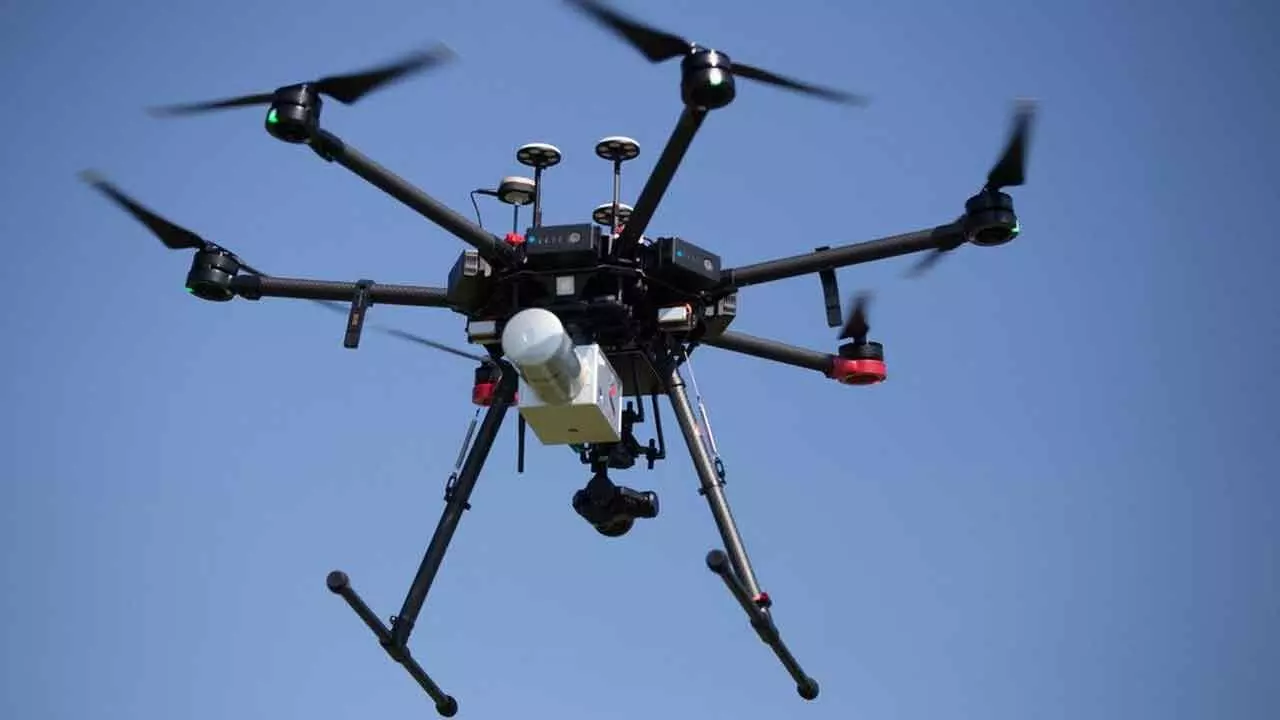Drone Impact Real And Rising
Drone Impact Real And Rising

While drones often grab headlines for their futuristic appeal, India’s drone journey runs far deeper. With market projections showing strong growth (17% CAGR), drones are transitioning from futuristic gadgets to practical tools across sectors like agriculture, defense, and last-mile deliveries.
India’s drone market is growing at an explosive pace. This sector, worth an estimated $1.58 billion in 2024, is expected to balloon to $4.83 billion by 2030. Such growth is driven by growing aerial applications across industry verticals including agriculture, mining, infrastructure and defence. The government’s target to make India a global drone hub by 2030 is not only aspirational – it has the economic potential of becoming a reality.
Drone and its components industry is likely to add about $23 billion to India’s economy by 2030. With this expansion, Indian manufacturers will have the opportunity to leverage domestic demand to derive economies of scale, and emerge as a global competitor to China
In the Operation Sindoor, launched by India in the early hours of May 7 2025 in response to the April 22 Pahalgam terror attack that claimed the lives of 26 civilians, India used its armed drones and launched Harop drones to hit terrorist sites and Pakistani air defence systems. Israeli Heron Mk II drones were also deployed by India to keep a close watch on the enemy forces.
SkyStriker suicide drones built in Bengaluru played a major role in destroying terror camps in Pakistan and Pakistan-occupied Kashmir (PoK). The SkyStriker suicide drone can carry a warhead of up to 10 kg. SkyStriker is a fully autonomous loitering munitions (LM) that can locate, acquire and strike operator designated targets with a 5 or 10 Kg warhead installed inside the fuselage, enabling high-precision performance.
A new long-range, autonomous suicide drone that is capable of operations from high altitude areas and forward landing grounds has been unveiled by Tata Advanced Systems Ltd (TASL) in February 2025. Named the Advanced Loitering System (ALS), the drone has a range of over 250 km and is designed to take off from advanced landing grounds that are located at altitudes of above 10,000 feet. Several such advanced landing grounds dot the border with China, particularly on the Ladakh border.
According to estimates made by the Drone Federation of India, The country's drone market revenue will expand from $500 million in FY2024 to $11 billion by FY2030. This $11 billion includes drone sales, component sales, service and leasing ecosystem. The Indian drone market is anticipated to grow at a remarkable pace in the next five years, led by a mix of government encouragement, technological innovation, and growing demand from various industries. Growing usage of drones in agriculture, defense, logistics, and infrastructure is also anticipated to drive market growth. Advances in technology, especially in artificial intelligence (AI) and machine learning (ML), are making drone operations smarter and more efficient.
Defense remains one of the largest markets for drones in India. The future of drones in the military is set to significantly enhance mission success rates, reduce human risk, and enable faster, more precise actions in complex environments. These advanced drones will play an increasingly vital role in intelligence gathering, reconnaissance, and combat support.
India’s drone revolution is being powered by a wave of smart startups. Names like Garuda Aerospace, IdeaForge, and Throttle Aerospace are building drones for agriculture, surveillance, and disaster relief. Backed by innovation hubs like T-Hub and iCreate, these homegrown companies are solving real-world problems—one flight at a time.
In defense, drones provide live aerial views for patrolling borders, tracking movements, and gathering intelligence, without putting personnel at risk.
Armed drones use advanced tech to locate and follow targets with high accuracy, making operations more effective.
During missions, drones assist by giving a bird’s-eye view of enemy positions, helping guide strategy, and offering real-time support. India’s drone sector, while expanding, continues to face critical operational challenges. Regulatory frameworks remain complex, with restrictions around airspace, altitude, and licensing slowing down broader adoption. Safety and privacy concerns are significant, given that drones are a flying mode of operation, they can inadvertently enter private spaces such as homes or offices, raising serious concerns over unauthorised surveillance.
Infrastructure gaps, including insufficient charging stations, landing zones, and maintenance access in remote areas, further restrict scalability. Moreover, the limited availability of trained drone operators and technicians continues to hinder industry growth.
India’s drone boom is more than a tech trend—it’s a shift in how the country moves, protects, grows, and entertains. With strong policy backing and a thriving startup ecosystem, drones are becoming everyday problem-solvers across sectors. From battlefield strategy to farm fields and city logistics, the impact is real and rising.

